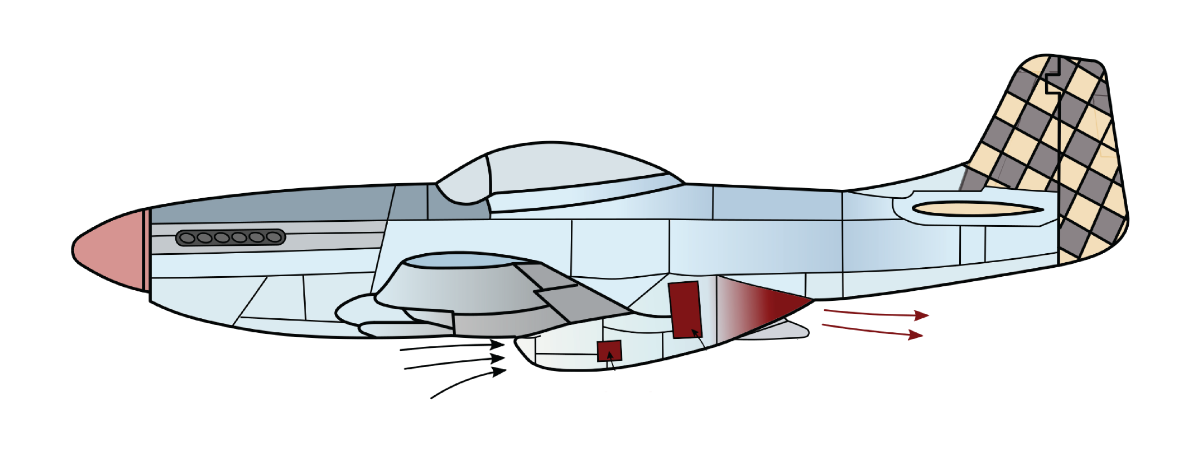The exFan project aims at developing novel thrust generating and heat dissipation system for a geared electric fan of mega-watt class using a fuel cell to provide energy.
The focus of the project is the recuperation device using the Meredith effect: the Heat Propulsor. It consists of the fan, the aerodynamic flow path components and the HX. The fan is driven by a high-speed electric engine via reduction gearbox and compresses the ingested air. This architecture allows the highest specific power. The electric engine and its corresponding power electronics and controllers are mainly powered by a fuel cell. During peak power demands, a buffer battery shares load with the fuel cell (e.g., during take-off). A thermal management system (TMS) connects to all previously mentioned components, to provide adequate thermal operating conditions. The exFan system encompasses all components that are not related to energy storage & conversion.

01
Heat Dissipation
Designing a revolutionary heat exchanger integrated into a geared electric fan with the aim to optimize heat dissipation and enhance the efficiency of the fuel cell-powered propulsion system, ensuring optimal performance at mega-watt scales.
02
Recuperation Technology
Innovating with the Meredith Effect, the objective is to develop an advanced recuperation device, harnessing cutting-edge technology to efficiently convert waste heat into additional thrust, contributing to the overall sustainability and performance of the aircraft.
03
Thermal Management System
Addressing the critical issue of thermal management, the goal is to lay out a sophisticated thermal management system. This system aims to elevate heat quality, ensuring seamless operation and longevity of the geared electric fan propulsion system.
04
System Simulations
The project delves into comprehensive system simulations for exFan, providing invaluable insights into the intricacies of the novel propulsion system. These simulations contribute to refining and optimizing the design for maximum efficiency.
05
Impact on Operation and Environment
Focusing on both operational and environmental aspects, this goal strives to understand the holistic impact of exFan on aircraft operations and the environment over its lifetime. The goal is to reduce global warming potential by 20%, achieved through meticulous parameter balancing and strategic handling of water vapor at high altitudes.
06
Information Exchange
Facilitating knowledge transfer, this goal emphasizes sharing project results with Clean Aviation and Clean Hydrogen Joint Undertaking. It ensures the broader aviation community benefits from the insights and advancements achieved through the exFan project.
